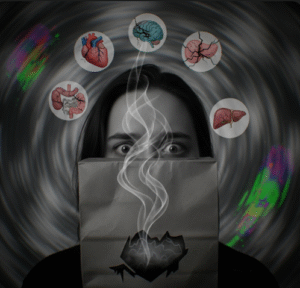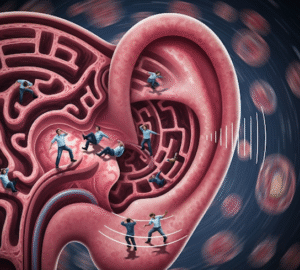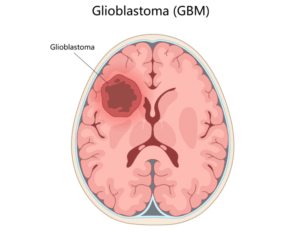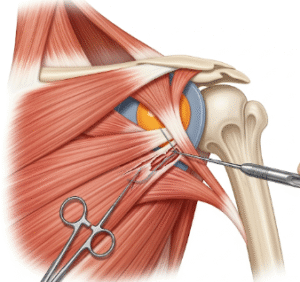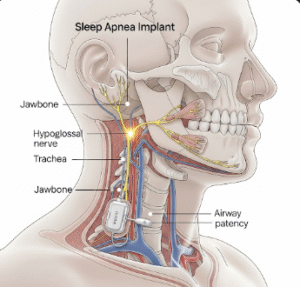Overview
A low hemoglobin count, medically referred to as anemia, is a condition in which the level of hemoglobin in the blood falls below the normal range. Hemoglobin is a crucial protein in red blood cells that carries oxygen from the lungs to the rest of the body. Reduced hemoglobin levels lead to insufficient oxygen delivery, causing symptoms such as fatigue, weakness, dizziness, and shortness of breath.
In Korea, medical facilities including general hospitals, hematology clinics, and primary care centers provide comprehensive evaluation and treatment for low hemoglobin. Diagnosis involves blood tests, nutritional assessments, and sometimes bone marrow analysis, while treatment focuses on addressing underlying causes and restoring hemoglobin levels.
Key Facts
- ➔ Normal hemoglobin levels typically range from 13.5–17.5 g/dL for men and 12.0–15.5 g/dL for women.
- ➔ Low hemoglobin (anemia) can be mild, moderate, or severe, depending on how low the count is.
- ➔ Common causes include iron deficiency, vitamin B12 deficiency, chronic diseases, or blood loss.
- ➔ Symptoms often affect energy levels, concentration, and overall quality of life.
- ➔ In Korea, treatment options include supplementation, medications, and specialized therapies depending on the underlying cause.
What is Low Hemoglobin Count?
Low hemoglobin count refers to a reduction in the concentration of hemoglobin in the blood, impairing the blood’s ability to carry oxygen:
- ➔ Mild anemia: Often asymptomatic or mild fatigue
- ➔ Moderate anemia: Noticeable weakness, paleness, or shortness of breath
- ➔ Severe anemia: Severe fatigue, dizziness, rapid heartbeat, and potential organ dysfunction
- ➔ Clinical significance: Persistent low hemoglobin may indicate nutritional deficiencies, chronic illness, bone marrow disorders, or bleeding problems
- ➔ Types of anemia related to low hemoglobin:
- Iron deficiency anemia
- Vitamin B12 or folate deficiency anemia
- Anemia of chronic disease
- Hemolytic anemia
- Aplastic anemia
What Symptoms Are Related To
Symptoms of low hemoglobin often vary depending on severity and duration:
- ➔ Fatigue and weakness
- ➔ Paleness of skin, lips, or nail beds
- ➔ Shortness of breath, especially during physical activity
- ➔ Dizziness or lightheadedness
- ➔ Rapid heartbeat (palpitations)
- ➔ Cold hands and feet
- ➔ Headaches or difficulty concentrating
- ➔ Brittle nails or hair loss in certain types of anemia
Recognizing these symptoms is crucial for early diagnosis and treatment.
What Causes / Possible Causes
Low hemoglobin can arise from various nutritional, medical, and genetic factors:
- ➔ Nutritional deficiencies: Iron, vitamin B12, or folate deficiency
- ➔ Blood loss: Menstrual bleeding, gastrointestinal bleeding, surgery, or trauma
- ➔ Chronic diseases: Kidney disease, cancer, or inflammatory disorders
- ➔ ➔ Bone marrow disorders: Aplastic anemia, leukemia, or myelodysplastic syndromes
- ➔ Hemolytic conditions: Sickle cell anemia or autoimmune hemolytic anemia
- ➔ Inherited disorders: Thalassemia or other genetic hemoglobinopathies
- ➔ Medication-induced anemia: Certain chemotherapy drugs, antiretrovirals, or anti-inflammatory medications
Identifying the root cause is critical for effective treatment and long-term management.
When Should I See My Doctor
Consult a healthcare provider if you experience:
- ➔ Persistent fatigue, weakness, or shortness of breath
- ➔ Unexplained dizziness, palpitations, or fainting
- ➔ Paleness of skin, nails, or lips
- ➔ Suspected blood loss, such as gastrointestinal bleeding or heavy menstrual flow
- ➔ Symptoms persist despite adequate rest or dietary changes
Early evaluation can prevent complications and improve quality of life.
Care and Treatment
Treatment for low hemoglobin depends on the underlying cause and severity:
- ➔ Nutritional supplementation: Iron, vitamin B12, or folate supplements
- ➔ Dietary modifications: Incorporating iron-rich foods (red meat, beans, spinach), vitamin B12, and folate sources
- ➔ Medications: Erythropoiesis-stimulating agents for anemia of chronic disease or kidney disease
- ➔ Treating underlying disease: Managing chronic illnesses, infections, or inflammatory conditions
- ➔ Blood transfusions: For severe or symptomatic anemia
- ➔ Monitoring: Regular hemoglobin and complete blood count tests to track improvement
- ➔ Lifestyle advice: Adequate rest, avoiding strenuous activity during severe anemia, and maintaining hydration
With proper care, most individuals can restore normal hemoglobin levels and improve energy and overall health.
Treatment Options in Korea
Korean hospitals provide advanced diagnostic and treatment options for low hemoglobin:
- ➔ Diagnostic evaluations: Complete blood count (CBC), iron studies, vitamin B12/folate levels, bone marrow biopsy if needed
- ➔ Specialist consultations: Hematologists, internists, and nutritionists
- ➔ Medical therapy: Oral or intravenous iron, vitamin supplementation, or erythropoietin therapy
- ➔ Blood transfusions: Available for severe anemia or rapid hemoglobin drop
- ➔ Chronic disease management: Kidney disease, cancer, or autoimmune disorders treated with tailored interventions
- ➔ Patient education: Guidance on diet, supplements, and monitoring for relapse
- ➔ Leading hospitals: Seoul National University Hospital, Asan Medical Center, and Samsung Medical Center provide comprehensive hematology services, individualized treatment, and follow-up care
In Summary: Low hemoglobin count (anemia) is a common condition that can significantly affect energy levels, cognitive function, and overall health. Timely diagnosis and treatment in Korea can identify the underlying cause, restore hemoglobin levels, and prevent complications.
- ➔ Key Takeaway: Persistent fatigue, weakness, or pallor should prompt evaluation for anemia.
- ➔ Action Point: Consult a hematologist or internist for diagnosis, targeted therapy, supplementation, and ongoing monitoring.






